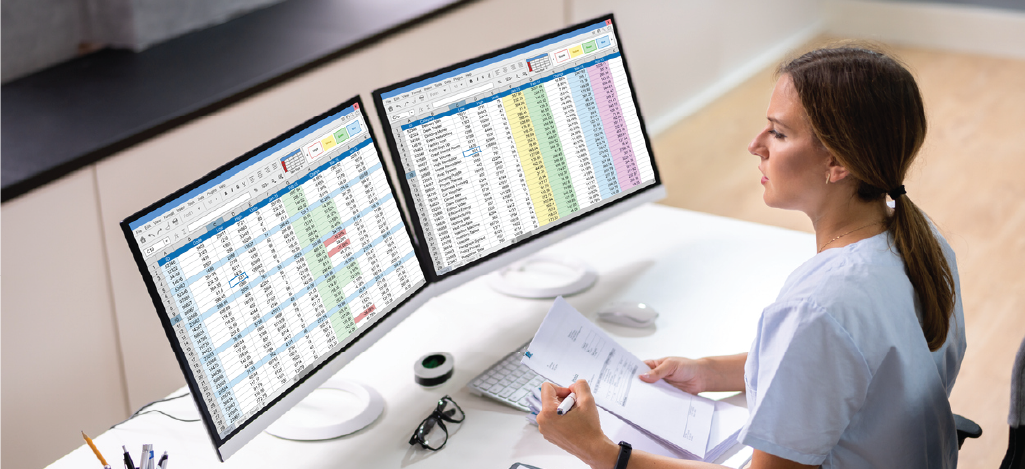Electronic Remittance Advice (ERA) provides many opportunities for healthcare providers. Here, we explore how to successfully implement it.
From the rise of high-deductible health plans to digital payment innovations, providers and patients face new complexities in financial transactions. The current payment process—still leaning on faxed papers, paper checks, and manual data entry—creates inefficiencies like delayed insurer reimbursements that reduce patient care resources. Office administrators likely feel like they waste too many hours a week posting payments because they can't automatically match the amount to the outstanding claims. Enter Electronic Remittance Advice (ERA) technology to digitally streamline this administrative headache.
ERA has entered the landscape as a technology with great potential to cut costs, reduce headaches, and allow for collaboration between payers and providers. The ERA, an electronic version of a payment explanation, provides detailed information about a claim, including the amount paid, adjustments, and any denied charges.
Understanding Electronic Remittance Advice: A Recap

Electronic Remittance Advice refers to the electronic documentation that accompanies health insurance payments from payers to healthcare providers to explain the associated charges, payments, and balancing adjustments made during claims adjudication. ERAs include patient and claim information with explanations of charges for services, reimbursement amounts, denial causes, and other payment details.
Digitally accessing detailed claim rationales prevents 20 calls a month previously spent unsuccessfully looking for answers from insurers. Offices will have the clarity they have been looking for. Streamlined data exchange also leads to quicker settlement cycles. ERA lets billing managers rest a little easier on reimbursements. The days of 50+ invoices pending reconciliation can be put behind you thanks to automated posting.
Electronic Remittance Advice vs. Traditional Payment Methods
Traditional payment methods in healthcare often involve paper-based remittance advice and manual data entry. This process can be time-consuming, prone to errors, and lacks transparency. On the other hand, Electronic Remittance Advice is automatically posted to the provider's system, eliminating the need for manual data entry and reducing the risk of errors. In addition, electronic delivery means providers receive payment information faster, facilitating quicker reconciliation and improved cash flow.
Current Challenges in Healthcare Payments
The healthcare payment process, despite its critical role in the healthcare system, is filled with challenges. These challenges often come from how complex the process itself is, which involves various moving pieces, each with its own procedures and requirements. One of the major challenges in healthcare payments is the reliance on manual processes. These processes are not just time-consuming, but they are also prone to mistakes.
For instance, manual data entry can lead to mistakes that can delay payments and create more work, and research shows that manual errors and clunky invoice systems set the industry back by tens of billions annually.
The numbers also show that accounts payable errors alone can cost the healthcare industry up to $6 billion a year, while bigger invoice issues can lead to losses of up to around $40 billion. Outdated manual processes slow too many healthcare dollars from patient care. Providers who rely on manual processes will continue to face higher costs due to time-consuming check payments and manual Accounts Payable (AP) processes.
By going after automation and efficiency upgrades, healthcare practices can redirect savings into service improvements their communities depend on. Eliminating manual billing and payment processes also allows staff to focus on delivering the best care with their full attention.
The Collaborative Potential of Electronic Remittance Advice
Managing the behind-the-scenes flow of healthcare payments between providers, patients, and insurance companies has always been a headache waiting to happen. Relying on a disjointed clutter of manual paperwork, phone calls, spreadsheets, and batched data files introduces unnecessary conflict into already strained workflows for everyone involved.
However, technologies like Electronic Remittance Advice (ERA) offer a promising path to modernizing this aged infrastructure by enhancing connectivity and transparency surrounding healthcare payments. In accelerating ERA adoption, stakeholders seize independent gains and collective benefits through better collaboration.
For providers, Electronic Remittance Advice gets rid of the headaches of payment posting through automation. Healthcare practice administrators regain hours previously wasted on manual data entry. The ability to proactively monitor claim status also minimizes uncertainty. Payers benefit from fewer calls because transparent ERA details limit provider questions.
Faster settlement cycles also enable the reallocation of resources to value-added initiatives. In addition, it generates a spirit of financial partnership that you can't quite get from traditional transactional relationships. All in all, ERA provides shared visibility into underlying issues hindering accurate claim payment. This alignment allows collaborative problem resolution.
ERA Implementation Best Practices

When integrating Electronic Remittance Advice into healthcare systems, ensure that all involved are educated about its benefits and functionalities. This includes training staff on using the system and analyzing the data it provides.
Given the degree of changes, a gradual rollout helps control disruption:
- Start with a portion of providers/claims before expanding ERA availability
- Monitor system issues and address them through collaborative troubleshooting
- Once stable, broaden its reach
Transitioning to Electronic Remittance Advice requires upfront investments, with long-term profitability demanding a commitment from payers and providers:
- Assess legacy IT system compatibility with ERA or upgrade
- Redesign related workflows to leverage automation
- Train staff on new capabilities and responsibilities
Security and Compliance in Electronic Remittance Advice
The adoption of any new digital healthcare technology warrants thoughtful governance regarding data privacy and security. What measures safeguard sensitive information within ERA systems? What regulations or compliance mandates apply?
Like any technology touching patient data, Electronic Remittance Advice merits competent data governance:
- Share files via secure protocols like HTTPS or VPNs
- Save ERA data securely behind provider firewalls
- Limit access to claims/payment info to essential personnel
Since ERA files contain PHI, disclosure respects “minimum necessary” principles under HIPAA. Providers and payers extend existing compliance practices for all relevant documents. From a compliance perspective, ERA processing must adhere to core regulations like HIPAA and PCI-DSS governing PHI and payment card data. Requirements like breach notification procedures, vulnerability management, and risk analysis also apply.
By defining and implementing a data security and compliance program customized to the unique nature of Electronic Remittance Advice, healthcare practices can accurately identify and manage risks. The good news is ERA digitizes existing remittance advice content into formats that are more efficient—instead of just introducing new data streams. So, extending existing privacy policies and controls to ERA through collaborative efforts allows healthcare practices to be efficient while being compliant.
Future Trends in Healthcare Payments
The healthcare payments landscape will continue to undergo changes, with technology and innovation driving improvements. As the adoption of tools like Electronic Remittance Advice increases, more trends will be on the way, such as:
Claims Auto-Adjudication
Also known as “auto-adjudication” will allow approved claims to flow straight through to payment without manual intervention. This reduces settlement times and administrative costs. ERA infrastructure and transparent documentation of decisions provide the foundation.
Real-Time Payments
By enabling immediate funds availability instead of the traditional lag of up to 30 days, some of the latest innovations promise to revolutionize cash flow. ERA's digital format and automation will help this transition.
Artificial Intelligence Claims Assistance
New AI solutions that are powered by Machine Learning will be able to auto-check claims for errors, suggest the best diagnosis codes for reimbursement, and analyze denial patterns.
Embracing ERA adoption serves as the connection that future-proofs payer and provider systems within healthcare. This integration empowers the healthcare IT landscape to adjust to the speed of technological advancements. By embracing Electronic Remittance Advice, healthcare systems will have what they need to integrate with the latest innovations, putting themselves in a great position to achieve great things in the industry.
Provider-Payer Relationships in the ERA Era

While the efficiencies we've already mentioned are certainly impactful, the technology also unlocks a basis for improving fragile payer-provider relationships. Today, providers have little visibility into the specifics behind claim denials and the resulting payment delays. Payers receive limited feedback data that identifies the leading sources of issues. This information can often lead to finger-pointing.
Electronic Remittance Advice files contain detailed coded explanations from insurers outlining the reasoning behind every claim decision. This information helps providers understand where documentation or billing issues stem from so they can correct them. Also, insurers will have the feedback they need to fix complicated policies that are leading to denials and payment troubles. So, ERA opens up the communication channels between healthcare administrators and insurers, allowing them to collectively resolve issues.
Making the Digital Transition
Transitioning from traditional healthcare payment processes to streamlined electronic formats through Electronic Remittance Advice (ERA) technology offers several efficiency opportunities for healthcare providers and insurance companies. However, successfully implementing ERA systems requires overcoming a few technical hiccups.
This is where solutions like BillFlash make a difference. BillFlash offers an all-in-one cloud-based platform that streamlines billing, powers seamless payments, improves collections, and provides end-to-end lifecycle support. Are you ready for faster, higher payments without added hassles?
Schedule a demo with us today!

